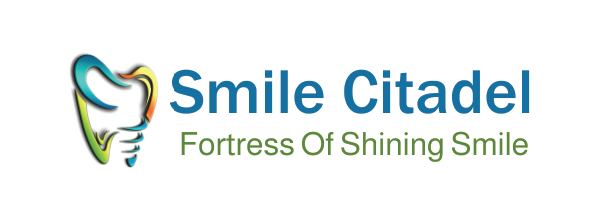Misinformation about dental care is surprisingly common, and unfortunately, believing these myths can quietly sabotage your oral health. Patients who accept erroneous advice or postpone treatment because of misunderstandings run the risk of developing more serious issues including cavities, gum disease, tooth loss, and costly later on procedures. One of our main objectives as dentists is to provide you accurate knowledge that will enable you to make wise decisions concerning your oral health. In this article, we’ll break down five of the most common dental myths and explain the real facts that will help you protect your teeth and gums for life.
Myth #1: “If My Teeth Don’t Hurt, I Don’t Need to See a Dentist”
One of the most common fallacies is the belief that dental visits are only required when something seems off. Actually, many dental issues, including infections, gum disease, and cavities can advance silently without any signs. For example, tooth decay sometimes begins small and painless. The cavity has probably gotten further into the tooth by the time pain or sensitivity arises, maybe calling for a more involved treatment like a filling, root canal, or even extraction.
Early detection and treatment of oral health problems depend on routine dental visits, which also help to prevent escalation of these problems. Your dentist will check your teeth and gums for early indicators of decay, gum inflammation, enamel erosion, or other issues not always obvious or symptomatic during your visit. Professional cleanings remove hardened plaque (tartar) not easily eliminated by brushing and flossing alone. Maintaining at least twice a year visits helps you lower your risk of significant dental issues and preserve your smile over time.
Myth #2: “Whitening Toothpaste Can Replace Professional Whitening”
Another prevalent misconception is the idea that professional whitening treatments cannot match the same dazzling effects of whitening toothpaste by itself. Although whitening toothpaste can help eliminate surface stains from coffee, tea, alcohol, or tobacco, it does not reach the deeper layers of enamel where natural discolouration originates. Although they cannot greatly alter the natural tint of your teeth, the abrasive compounds in whitening toothpaste are meant to polish their outside.
Moreover, too frequent use of abrasive toothpaste can erode enamel, which over time increases tooth sensitivity. Whether performed in-office or with custom take-home trays, professional whitening procedures employ carefully developed bleaching agents that gently penetrate enamel to lighten surface and deep stains. Your dentist customizes and oversees these treatments to guarantee good results without compromising your teeth or gums. See your dentist about safe, professional methods catered to your needs if you want a considerably whiter smile.
Myth #3: “Brushing Harder Cleans Better”
Many consumers think the greatest approach to get their teeth clean is to forcefully scrape them. On a toothbrush with firm bristles, however, brushing too aggressively can erode enamel, lead to gum recession, and over time raise dental sensitivity. Strong brushing aggravates the gums as well, which could cause inflammation and damage.
Using a soft-bristled toothbrush with gentle, circular strokes around the gum line and tooth surfaces can help you to brush most effectively and safely. Twice a day brushing for at least two minutes with fluoride toothpaste efficiently removes plaque without damaging your teeth or gums. Replace your toothbrush every three to four months, or sooner if fraying of the bristles results. Combining appropriate brushing with daily flossing and frequent dentist visits produces a complete approach to oral hygiene that maintains gum health and enamel while controlling plaque.
Myth #4: “Baby Teeth Don’t Matter Because They Fall Out Anyway”
Some parents wrongly believe that since permanent teeth would eventually replace baby (primary) teeth, there is less need for attention to them. Still, baby teeth are quite important for the oral development of your child. They ensure perfect chewing, clear pronunciation, and preserve the required jaw space for the eruption of permanent teeth to be accurate.
Early tooth loss, abscesses, and pain can all follow from infant teeth developing cavities or infections. Early loss of baby teeth can throw off the alignment of adult teeth, resulting in crowding or orthodontic issues down road. Early on development of strong oral hygiene practices, brushing, flossing, and frequent dentist visits sets the stage for a lifetime of healthy smiles. To further safeguard your child’s teeth during these formative years, your dentist might also advise dental sealants or fluoride treatments.
Myth #5: “Sugar Is the Only Cause of Cavities”
Sugar is a main cause of cavities, however it is not the only element influencing things. When germs in your mouth break down carbohydrates and generate acids that erode tooth enamel, cavities result. Any fermentable carbohydrate can set off this process; it is not only about sweet sweets. Foods high in carbs and natural sugars bread, crackers, pasta, even fruit can feed cavity-causing bacteria.
Your risk of tooth decay can also be raised by frequent snacking, bad oral hygiene, dry mouth, and acidic beverages including soda or sports drinks. Regular brushing and flossing help to reduce these risks; restrict snacking between meals; and rinse with water following an acidic or sugary meal. Drinking fluoridated water throughout the day helps wash away food particles and neutralize acids, so preserving a better environment in your mouth.
The Power of Accurate Dental Knowledge
Knowing the truth behind these popular misconceptions helps you to decide on your dental treatment more wisely. Maintaining long-term oral health depends on precise information whether it comes from visiting the dentist routinely even without symptoms or using softer brushing techniques. Modern dentistry emphasizes early intervention, education, and prevention to help you avoid later, needless suffering and expensive procedures.
Your best source of evidence-based guidance catered to your particular requirements is your dentist. During your dental visits, don’t hesitate to ask questions, clear uncertainty, or get recommendations. Maintaining knowledge helps you to actively contribute in keeping your grin intact.
Conclusion
Believing dental misconceptions can silently compromise your oral health, resulting in over time avoidable problems and costly procedures. By dispelling these common myths, you enable yourself to adopt habits that really protect your gums and teeth. To keep a confident, healthy smile for life, give gentle brushing, daily flossing, balanced eating top priority as well as frequent expert care.
Today’s investments in precise knowledge and preventative behaviors will help you avoid dental crises, lower long-term expenses, and enjoy years to come from robust, healthy teeth. See your dentist routinely, be open with questions, and promise a fact-based approach to dental hygiene. Your grin of future thanks will be appreciated.

